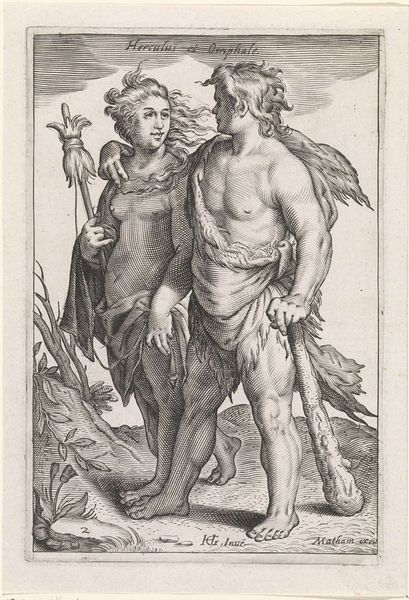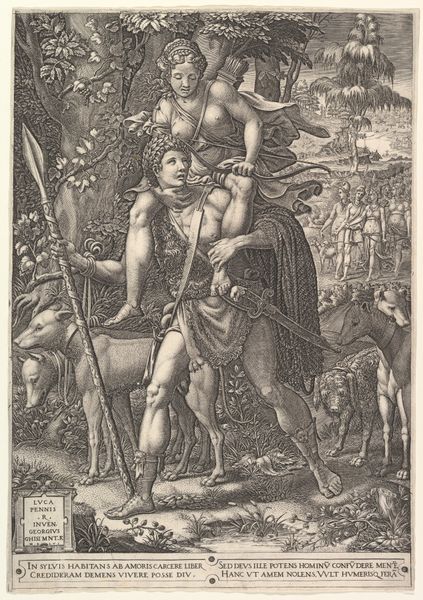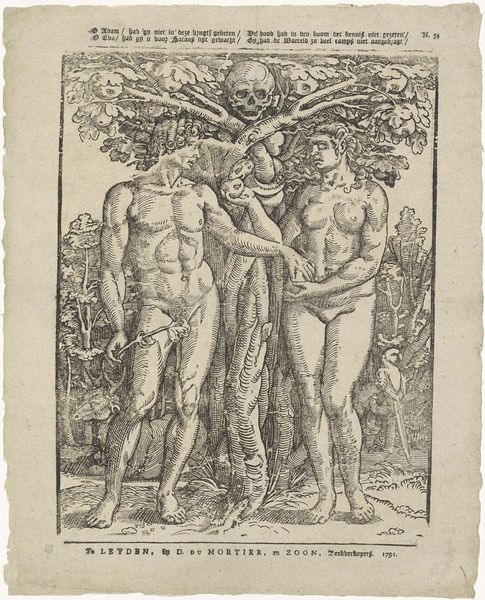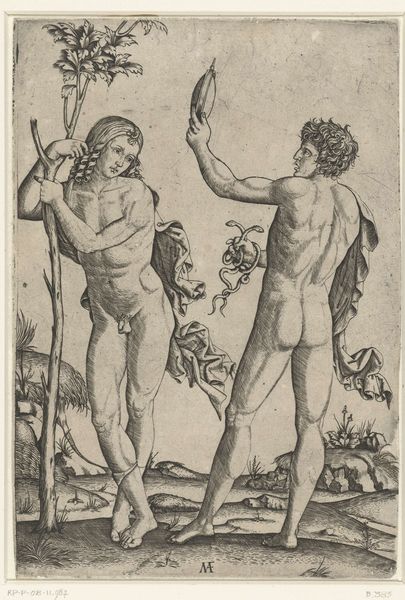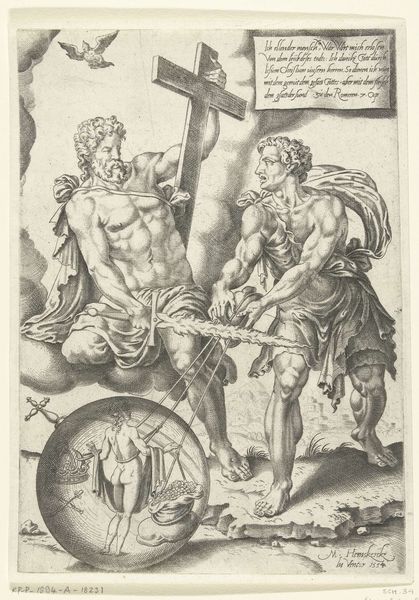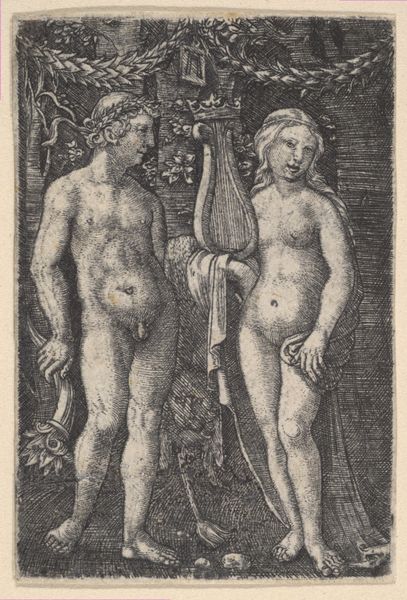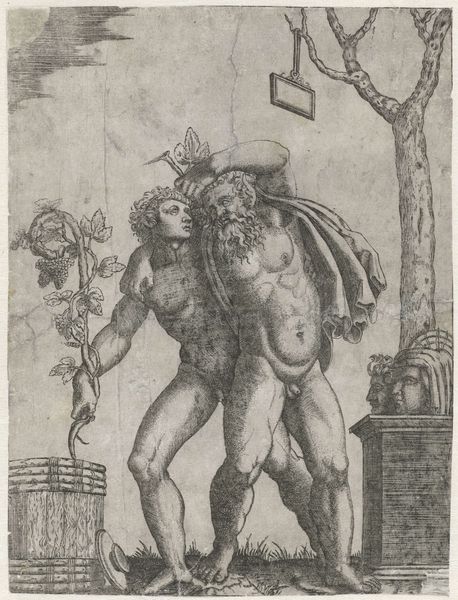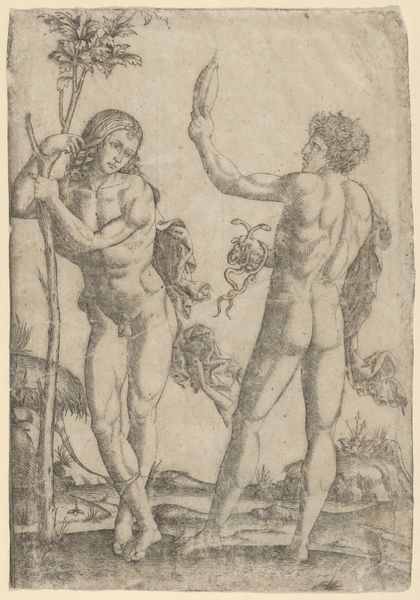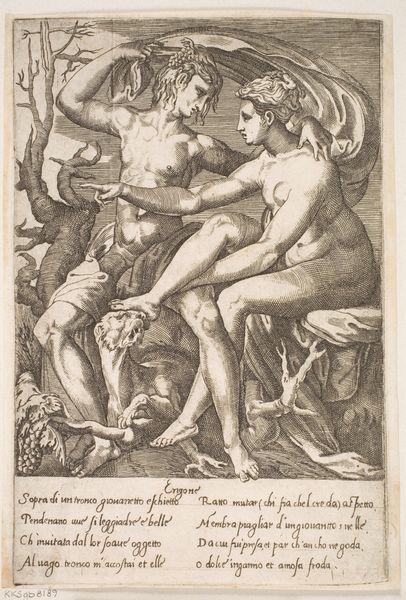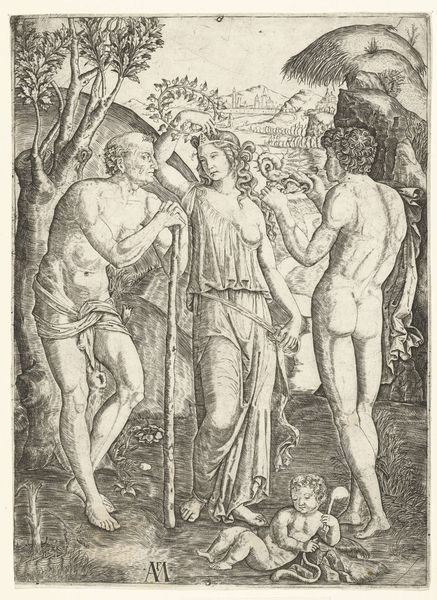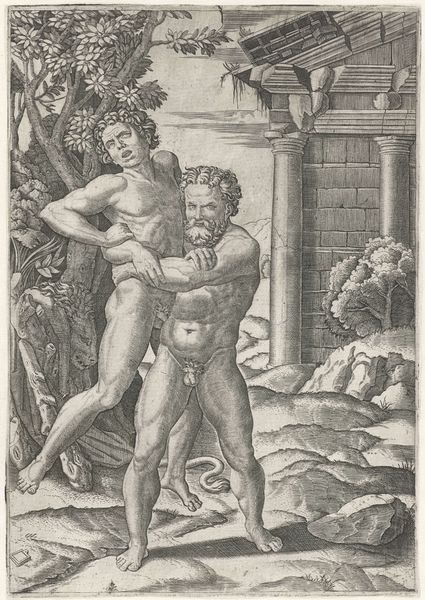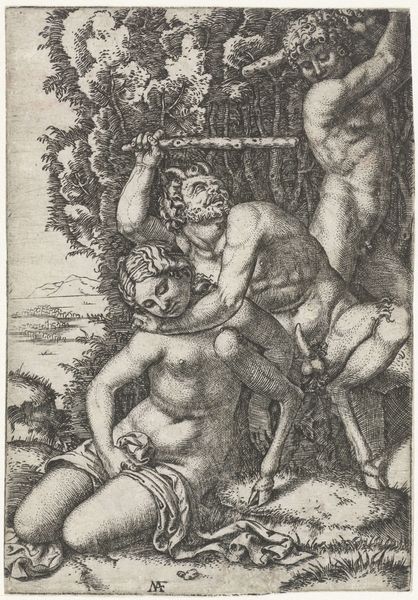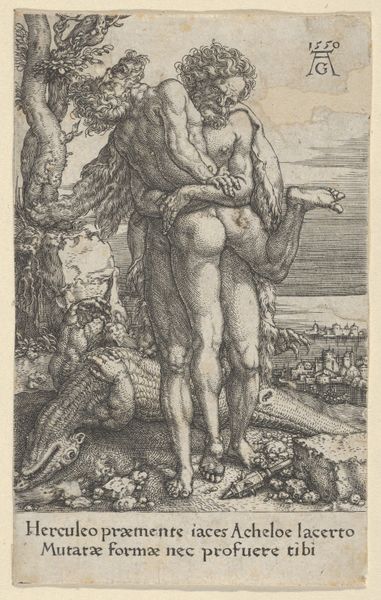
print, engraving
# print
#
figuration
#
11_renaissance
#
pencil drawing
#
history-painting
#
italian-renaissance
#
engraving
Dimensions: height 296 mm, width 224 mm
Copyright: Rijks Museum: Open Domain
Curator: Welcome. Today, we’re examining Marcantonio Raimondi’s engraving, "Apollo en Hyacinthus," believed to be created around 1506. It currently resides here at the Rijksmuseum. Editor: The density of line work is immediately striking. Look how the engraver manages tone and form solely through the variations in the hatched lines. It almost gives the impression of a pencil drawing. Curator: Indeed. Raimondi’s masterful control of the engraving technique is remarkable, particularly in rendering the musculature and drapery. Notice the compositional structure. The figures of Apollo and Hyacinthus are framed by the trees, creating a balanced, almost symmetrical design. Editor: But the context here is what really interests me. Engravings like these weren't created in a vacuum. The process – the metal plate, the cutting tools, the press – allowed for a circulation of images, transforming singular artworks into reproducible commodities. It changed art consumption forever. Curator: That’s a valid point. But, also, consider the classical references. Apollo, god of music and light, alongside Hyacinthus, a Spartan prince, illustrating Ovid’s narrative. The pathos lies in knowing what’s coming. The weight of fate hangs heavy, expressed so clearly in their averted gazes and in that knowing cupid peeking out from behind the trees. Editor: And what about the accessibility of these engravings? Were these accessible to just an elite clientele, or could ordinary folk access cheaper impressions and derive knowledge about classical myths through art? These prints could also function as models or guides for larger works, therefore democratizing and expanding artistic engagement. Curator: Certainly. That distribution network you're referring to allowed classical narratives and aesthetic ideals to reach broader audiences than ever before. Note Raimondi’s technical prowess again; he's borrowing stylistic ideas from Northern printmakers like Dürer to depict an Italian story. Editor: Seeing it now through that lens, one must admire the complex negotiation of art and manufacturing, making what we would term as "art" from sheer labor and mercantile means. Curator: Absolutely. Raimondi's work exemplifies that beautiful fusion of artistic skill and burgeoning industrial production. Editor: The more I ponder the implications of such printmaking in this context, the more the layers of meaning deepen for me. Curator: Yes, I’m glad to have seen "Apollo en Hyacinthus" from your vantage point today.
Comments
No comments
Be the first to comment and join the conversation on the ultimate creative platform.

